A Visit to Covenant Archives
I visited the Covenant Archives during my college and seminary student days at North Park when it was on the top floor of Nyvall Hall, tucked under the eaves adjacent to the office of the archivist, E. Gust Johnson. Today it holds far greater fascination for me and it is remarkable how one's outlook changes over the years.
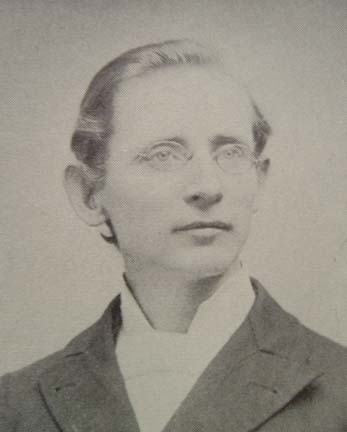
F. M. Johnson
My grandmother spoke of Albert Johanson, pastor of our home church at Wausa, Nebraska, and her words indicated that he was one of the old-fashioned Swedish bent. I retrieved a book he wrote from my Grandfather's collection which was titled "The Angel of Revelation", in Swedish. I sent this to the archives to be preserved long ago, as many Covenanters have sent early artifacts, and so feel just a little stake in that collection. Recently I discovered that Johanson's coming to America was in large part at the urging of one E. A. Skogsbergh, who gave his young friend the nickname "The prophet Amos" (Skogsburgh's memoirs). Now the location of the archives has changed, to the more spacious rooms in the basement of Brandel Library, and current archivist Steve Elde established me at one of the tables in the F.M. Johnson room, beneath bronze likenesses of Jennie Lind and Charles Lindberg, an odd couple indeed!
The circular letter inviting Mission Friend pastors to a meeting aimed at forming our Covenant church was sent over the signatures of F.M. Johnson and C.A. Björk, pastors of the north side and south side tabernacle churches. Pastor Johnson appears often among the founders and his impressive portrait is well placed in the archive's main room now bearing his name. The founding meeting of 1885 is well chronicled especially by Karl Olsson, and a later F.M. Johnson anecdote is interesting:
(after 1910) "...Covenant evangelism was still being entrusted almost entirely to men who could not preach in English. E.A. Skogsbergh was reappointed evangelist in 1919, when he was sixty-nine, and F.M. Johnson was engaged as evangelist the same year. He was then sixty-two and was not comfortable in an English sermon. Three years later, Albert Johanson was asked to serve as Covenant evangelist. He was younger than Skogsbergh and Johnson, being fifty-one in 1919, but had even less feeling than they for the English idiom." (BOS, p. 471) Johnson was clearly one of those "strong in the pulpit", but only in Swedish.
The dividing lines were fluid in those days, as illustrated by the startling fact that he once shared with August Davis a preaching mission to Minneapolis. Davis preceded him as pastor of the south side tabernacle, succeeding Skogsbergh, and was involved in the stormy introduction of pentecostalism to that body. His style disturbed the staid community and his departure to the Twin Cities marked the coming of the same "disturbances" there. It was Davis whose name is associated with the so-called "Free-free." But back in Chicago, F.M. Johnson became pastor at the tabernacle and ultimately hosted the charter meeting of the new Covenant.
Beneath the gaze of his portrait and in the room honoring him, I began looking into the files which Steve retrieved for me: those of Andrew Hallner, C.A. Falk, and John Martenson. (A.N. Sweders was on my list, but must wait for another time)
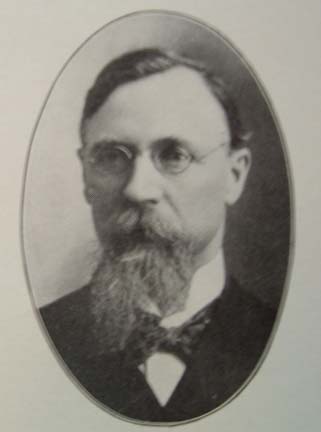
Andrew Hallner
Hallner like the others had a Nebraska connection and so was of interest. His brief autobiography and its translation by Sigurd Westburg, archivist and professor of Missions during my seminary days, were in this file and made it the "pearl of great price" for this visit. Its story will be told elsewhere. Two letters signed in his own hand to G.D. Hall were in the files. They concerned an invitation in 1919 to the Rockford annual meeting and Hallner's authorizing Hall to represent him there. G.D. Hall served both the Wausa and Stromsburg Nebraska churches.
Martenson's Nebraska connection proved tenuous; the family name appears in the Phelps Center area, and he scheduled preaching visits there, but the most we can deduce was that he had relatives there. He hailed from Jönköping via Wisconsin and is buried in Chicago. More about him under Chicago-Bladet.
Falk was the first pastor at Stromsburg mission church (1876-81) and the family name remains there. He came from Småland to Illinois in 1870. His training included Paxton seminary under Hasselquist but then takes a turn to Ansgar College. It is stated that he held membership in the Ansgar ministerium and later also in the Covenant ministerium. His name is found in accounts of the Fremont/Essex Iowa mission church. He is said to have preached in Illinois, Iowa and Missouri and have been pastor at Plattesmouth, NE, in 1891. That work did not survive. (It is known that another Falk, P.J., was at Plattesmouth; C.A. Falk's presence there is less certain.)
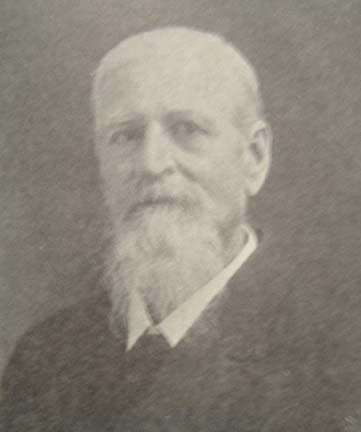
C. A. Falk
Not from the archives, but from the Wausa Centennial book comes the story of insights into the Falk family pilgrimage from daughter Teckla Falk Peterson's family: "Teckla, sixth child of Sarah C. and C.A. Falk, sailed with her mother, four sisters and one brother to join their father, who had gone ahead to America to locate and build a cabin in preparation for his family's arrival. His choice was the Red Oak-Essex, IA, area. When mother and children arrived the cabin wasn't finished, so the side that was missing was closed in by long strips of woven rugs that Sarah had brought with her from Sweden. There was a spring on the hill in back of the house, so father Falk dug a hole and lined it with sand, which served as their water supply. Teckla took on household duties at an early age - knitting socks, and herding cattle over the prairies that were full of rattlesnakes. Her father was a traveling minister. There were no churches, but he went from one area to another and held meetings in homes. There would be 18 to 25 people that would meet in a 2 or 3 room home, staying overnight."
Charles and Teckla's son Clarence Peterson is one I remember from the Wausa Covenant Church.
One of the well-remembered Greenwall neighbors in Wausa was the Edgar Johnson family. Edgar was born near Essex, IA, to C.A. Falk's daughter Selma Falk Johnson, one of the sisters mentioned above. This family, the F.A. Johnsons, also lived at Wakefield before coming to Wausa.
Another Falk, initials P.J., was active in Nebraska at the same time and to avoid confusion let us give the details from the archives about him as well. Served Hastings 1887, York 1889, Oakland 1890-93, Chapman 1893-95, Oakland 1896-98 and 1901-02, Pomeroy IA, Haxtun CO 1905-06, Sumner, Hooper NE. "according to Rev. C. Edwin Anderson, Oakland, NE "(Oakland First, Wausa native, wife Dorice Frykman Anderson) he died in California. He is described as a sometimes misunderstood bachelor, poor in health. His name appears in Essex/Fremont records as well. Chapman, Hooper and Sumner may have been "preaching stations" that did not mature into congregations. We have no indication that these Falks were related.
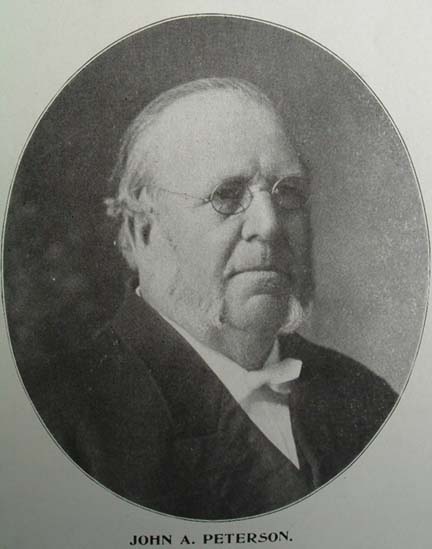
John Peterson of Oakland
John Peterson may be the foremost of the Nebraska mission founders by reason of his early date, contact with the Chicago founders from the Mission Synod days, longevity of service in Oakland, and activity in founding other congregations in the state. The obituary in his file stated: "Many are the places in the Midwest, where he was the first Mission preacher ever heard." Elsewhere, Hallner observes that he was the first to proclaim the Waldenströmian point of view in Saunders County. He farmed his own homestead west of Oakland which passed on to his family. Descendants of his are known to the writer. His story deserves to be expanded in another place. To avoid confusion once again, we have some details on the other mission pastors who shared the name John Peterson. "Hillerstorp Peterson", so-called for his place of origin, was a mission pastor who immediately preceded our Oakland Peterson in serving the Des Moines mission church, and had the same middle initial. Another John Peterson, "the older" was from Minnesota.
(there were a number of Swedish papers, all interesting, I chose to begin with this one in spite of its featuring anti-Covenant material: Missions Wännen would be closer to home)
These gleanings from the ministerial files were followed by sessions at the microfilm reader examining the first half of 1884 as chronicled by the Swedish newspaper, Chicago-Bladet. My home church in Nebraska was founded as "The Swedish Christian Congregation" of Wausa in 1890. It seemed very typical of the Covenant churches around us. Why then was it not called "Covenant?" And why not "church?" Covenant stalwarts such as John Peterson had attended its founding; Frykman, Lidman and Johanson served there. My mother knew the words that once were controversial..."förbund", "föreningen", "församlingen." Neither she nor I could understand all of what the fuss was about. We were aware of the Free church, though there was not one within fifty miles of us. Grandpa told of the division in Polk county, where feelings were high and families divided. We were spared that pain, but to what extent did the Free controversy reach into and affect Covenant congregations? As the journalistic wellspring of that movement, Chicago-Bladet was the place I was going to visit. The name "Swedish Christian Congregation" echoes the point of view of John Martenson, its publisher. (see Chicago Swedetown section for more on Chicago-Bladet)
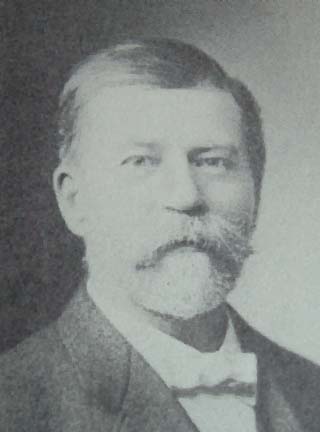
Chicago-Bladet's John Martenson
My Swedish was not up to parsing theological fine points (I say I know just enough Swedish to be annoying). And the old Swedish typescript is another barrier. I did not find a "smoking gun"...not this time. But the hottest issue of the first half of 1884 for Chicago-Bladet was the financial crisis at Ansgar College. The discussions of the school committee at Knoxville, Illinois in 1884 were reported in great detail. Offerings by Princell, Martenson, Blomstrand, Hjerpe, Högfeldt, A.G. Larson and Bergström were printed verbatim. A "per member" levy was even discussed! Ansgar College was indeed in trouble. Gifts to Ansgar, however small, are noted in the weekly issues of the paper. An advertisement by Princell regularly appears. Even gifts "in kind" from the Swedish communities for auction are recognized with thanks from Josephine Princell. "Thanks to Anna Hultquist of Osceola, Nebraska." Ansgar needed the Swedish communities behind it to survive, but those communities aligned with the Mission Synod may not have "believed" in schools that much. And their leader, Björk, could remind them that the Ansgar Synod had not made "regenerate membership" constitutional. In spite of early successes and windfalls, serving many students including Stromsburg's first pastor, C.A. Falk, Ansgar College and Seminary closed.
To speculate a bit on the effects of this failure: Hjerpe went on to work for higher education for the Mission Friends, at North Park. Princell as well continued this kind of work at his Swedish Bible Institutes in Chicago and Minneapolis (my great uncle was one of his last students). Högfeldt and Martenson made their names in publishing Missions Wännen and Chicago-Bladet, sharp critics of institutions of higher learning. There they could appeal directly to the common person in the pew, the ones who instinctively trusted Björk, the cobbler, and associated priests and professors with something distasteful they had left behind in Sweden. These former colleagues of Ansgar seem to have moved in divergent directions, but their experience there might have shaped their future courses. What is remarkable to me is that though now their legacies are far separate, once they were together.
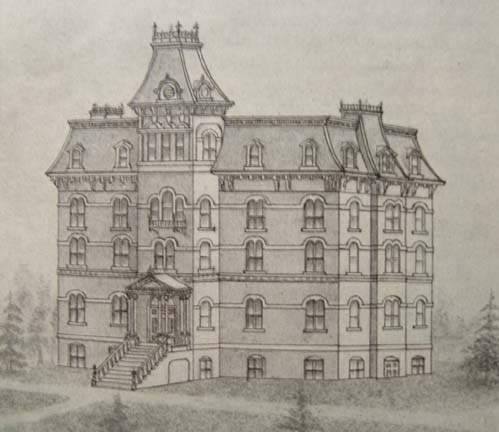
Ansgar College near Galesburg
This would be the place to insert some observations of Covenant President C.V. Bowman about Ansgar College, writing in the Swedish-American Historical Bulletin also in the archives. When Esbjörn and like-minded leaders broke with the "Americanized" Lutheran General Synod to form Augustana, they aligned themselves with those immigrant groups of Lutherans who also resisted the American innovations and made up the General Council Lutherans. Bowman refers to this General Council as "more ritualistic." More often, this divide is described in terms of allegiance to the "unaltered Augsburg Confession" as opposed to the Americans who held the Augsburg Confession only "mainly correct." It seems a curious joining of pietistic Swedes and "ritualistic" Lutherans...and indeed it was. It made Augustana vulnerable to dissidents who soon made their presence felt.
In "Augustana Heritage", G. Everett Arden carefully spells out the confession issue. The Americans of the General Synod following the leadership of S. Schmucker wished to affirm the following:
1) A pledge to the Old and New Testaments as the only infallible rule and guide of faith and practice.
2) The Apostles Creed
3) The Nicene-Constantinopolitan Creed
4) An American recension of the Augsburg Confession
This latter confession was modified in the following areas to be more in keeping with present-day thinking:
-The ceremonies of the mass
-Private confession before the priest
-Divine obligation of the sabbath
-Baptismal regeneration
-The Real Presence in the Eucharist
Says Arden in summary of the new view: "...the Lutheran Church in America must adopt the more effective new measures techniques of revivalism, and the traditional spirit of confessional exclusiveness must give way to the more modern interpretation of Christianity which affords more freedom to the individual in both his worship and in the definition of his faith."
There was virtually nothing here that would be objectionable to Swedish revival people.
There were those, such as Charles Anderson, to whom the Americanized Lutheranism was not such an obstacle. His Galesburg congregation was one of those who joined together to form an alternative to Augustana and affiliate with the General Synod's local arm, the Synod of Northern Illinois. Quite a number of congregations rallied to this banner and in that moment may have been the raw material for a viable synod rivaling Augustana's early prominence. The Synod of Northern Illinois had taken the mission congregations under its wing, so to speak, and made possible the ordination of Sanngren in Chicago.
Why then, did this fledgling group fail to coalesce under Anderson's leadership? At the charter meeting of the Mission Synod at Keokuk in 1873 the members did not vote to join the Synod of Northern Illinois as he had assumed they would, and formed a governing board which did not include him! They also affirmed the "unaltered" Augsburg Confession as had Augustana. Bowman observes that Anderson was "premature" in his assumption. Here are some suggestions:
-Augustana propaganda in Hemlandet had probably been railing against the Americanized Lutheranism as much as against the mission schizmatics.
-Anderson wanted to start a school, which would have meant expenses the new congregations could ill afford...and many were suspicious of higher education for clergy or anyone else.
-Swedes are reluctant to make sudden changes.
-Anderson was not Swedish but Danish.
Had the situation been given more time to develop unity might have evolved, but Anderson had committments which could not wait. He and those siding with him formed their own synod, the Ansgar Synod, in 1874 and opened their Swedish Mission Institute at Keokuk. A promising joint venture with Carthage College did not materialize. The Knoxville facility, a windfall opportunity offered by that town near Galesburg, opened in 1875. Karl Erixson succeeded Anderson as its president in 1878 and made an unsuccessful overture to join with the Mission Synod. There they would meet a president Björk who would chide them for "the error of their ways." Now Bowman observes a new "free impetus" and Waldenströmian ideas that bore against Lutheran confessionalism. Karl Erixon moves to Lindsborg, Kansas, and the leadership of Ansgar College goes to J.G. Princell in 1880. This brings us to his strenuous efforts to rally mission friends of every stripe to the support of this Swedish school as seen in the pages of Chicago Bladet.
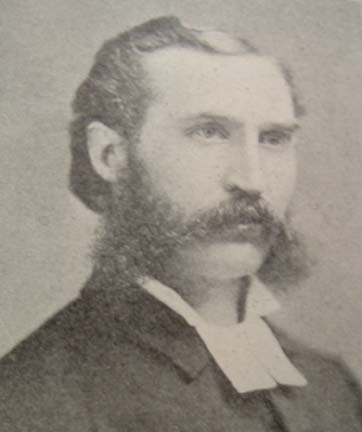
J. G. Princell
Ernst W. Olson in The Swedes in Illinois reports Princell's 1884 proposal to the Ansgar Synod meeting in Wooster, Mass., that it be reorganized independently of Lutheran creedal reference (neither altered or unaltered), called "The Swedish Mission Covenant of America" and adapting the Bible as the only perfect guide in matters of faith and living." Princell was giving up on forming synods with their various creeds. He even gave up his membership in Ansgar, and would have done so sooner had he known that he could perform ministerial functions without it. To his suggestion there was "No action taken," reports Olson. This is remarkable. The bald fact is that one year later, there was a Swedish Mission Covenant formed, it absorbed former Ansgar congregations, and, this is the most remarkable feature, it included the Mission Synod en toto along with its president, C.A. Björk as its new president. Princell was out. Karl Olsson in By One Spirit is refreshingly candid about the dimension personalities played in this. As in the case of Charles Anderson, Princell did not wither, but rallied the independant churches who wanted not even this level of synod-like organization into what became the Swedish Free Church. Chicago Bladet remained their loyal organ. Ernst Olson despairs: "The lines of demarkation between these cannot be distinctly drawn." We know that Björk was the one to survive. The mission friend leaders trusted the cobbler.
With hope now gone, Ansgar College closed its doors. Bowman ends the sad story with E.G. Hjerpe selling the furniture for twenty-five cents on the dollar and the building reverting to the city of Knoxville as stipulated.
I found much that could appeal to the commoner in the pages of Chicago-Bladet as it found its way to mailboxes in the Swedish-American communities. There was the news from Sweden; what was happening in the provinces of tender memory and to the familiar names and places left behind. There were ads for the steamship lines for those who wished to compare current costs with what they had paid, and to dream of a visit back to the home country. There were ads for railroads going westward, where cheap land and opportunity beckoned. We know these ads garnered rich responses. It was an agrarian time...the commodities prices appear in each issue..."Korn - 62 cents per bushel." The mysterious deities of corn prices in Chicago were then what they are now...mysterious and all-powerful. J.P. Lundgren has land for sale in Kearney and Phelps counties, and Nordgren & Svenson have land at Chapman for three dollars an acre. A record-setting snowstorm is reported in Lincoln. And did you know that as many as forty million buffalo once roamed the Dakotas?
There were personal ads. Someone wishes to know the whereabouts of so-and-so from such-and-such a place in Sweden, last seen at this settlement in Illinois or Minnesota...where is he? John Berg of Waverly, Nebraska, would like a "smed", blacksmith, to locate in his community. There is a farm for sale in Dakota. C.A. Bergren is preaching at Coin, Iowa, but would like a call to the Richwood, Minnesota area (!) Changes of address were important: C.J Erixon from Mountain Grove, Missouri, to New Britain, Connecticut. P.G. Engström is moving from Altona to Holdrege. Even E.A. Skogsbergh reports a new address: 1311 Franklin St., Minneapolis. Dark-bordered notices of someone's passing appear: A. Herrman of Kiron, Iowa, and two Anderson children of the Argo mission church in Burt County Nebraska. Tugs at the hearts of Chicago-Bladet readers. (read how we later found the Anderson graves in "A visit to Oakland and Swaburg")
But we are forgetting the front page. There was printed a lengthy sermon, in each and every issue. A sermon typically by...Moody, or Rosenius, or Spurgeon, or Ryström. I wonder if the Mission Friends read the sermons first...or later? There is something more of interest in the religious vein also, the announcement of mission meetings. I remember the excitement of my country school classmates, children of the German Lutheran pastor just up the road, when they spoke of going to "mission festival" or possibly of having one at their church. That was as close as I came to personal contact with a vanished form. We gathered with curious excitement on "Saturday night in town" around the newfangled marvel, the television. Little did we know that the new era which doomed things like mission meetings would ultimately doom even Saturday night in town. Perhaps if we think of family vacation, the fair, and conference annual meeting together it might approximate the impact of mission meetings. It was religious, but very social...even with the possibility of romance I am sure. Karl Olsson devotes a special chapter to the mission meetings, affirming their centrality. Listen to these announcements from Chicago-Bladet:
C. Wenstrand announces a mission meeting in Fremont, Iowa. Adam Lidman announces one in Bethesda, New York. Charles Sandquist breaks ground with a joint Baptist-Mission meeting in Oakland, Nebraska. (The two groups would share a church building in Sioux City) There was something of a standing invitation for mission meeting at Bush Hall, Chicago, home of the Free, extended by "the committee." (Bush Hall was a kind of "non-church" which also housed the shops of Chicago-Bladet. It was often served by C.O. Sahlström, variously described as pentecostal or perfectionist, who had caused a split at Princeton and ended up among the "Free-free" in Minneapolis.)

Home of Chicago-Bladet: Martenson's "non-church"
J.P. Johnson called the faithful to Lost Grove, Iowa (now Harcourt). In Kearney County Nebraska, C.F. Anderson sets a date at Keene. A.G. Larson (see above) announces in nearby Phelps Center. E. Johnson at Hamilton County, the Skogsbergh family home. Back in Iowa there are events at Angus, Boone County, by Lundblad; Ogren's in Ogden; Aurelia near Cherokee by A.P. Rose and at Odebolt by Anderson (to be held at the Larson skolhus). Down in Scandia, Kansas, the ad is placed by Axel Anderson; over at Lindsborg it is C.R. Carlson; at Brantford, Skyllberg. In Illinois at Moline by the noted K. Erixon. As today's idiom would have it, "how big was this?" It bears repeating: not till the day of the interstate highway would we be as mobile as were the immigrant Swedes, and we may never again be so motivated to "get together." All posted in Chicago-Bladet, most with the caveat "Lord willing."
When Skogsbergh traveled to hold a preaching series, it was announced with special notice. The same for Princell. Martenson would be preaching in Phelps County (were the Martensons there his relatives?) The colorful John Rödman writes a travelog of his visits around Minnesota. I had only been able to sample six months of Chicago-Bladet.
When Franson helped charter a church, as he did at Eleanor's home, Westmark, his working title was "The Church of God"...at Westmark, Phelps Center, etc. He steered clear of denominations and synods in this way. The "Christian Congregation"; was it prescribed by Princell and Martenson at Chicago-Bladet? It could have been. The power of its voice reaches out even now. They must have thought than the Covenant "walked like just another synod and quacked like just another synod." Many steered clear. But like moderns looking at fossilized footprints of dinosaurs, we can only venture an educated guess.
We hope to return to the archives with this and many other questions.